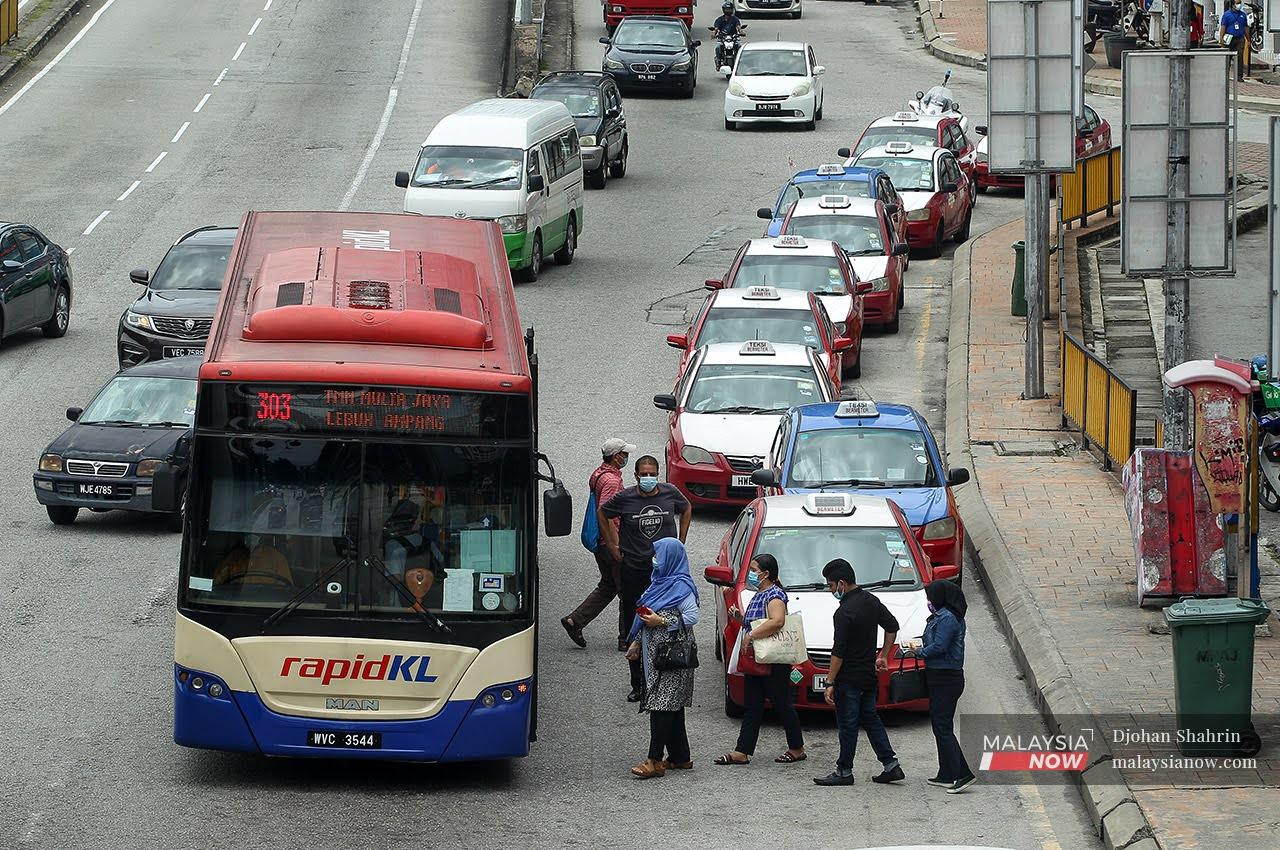Fewer buses going all through town leave waiting commuters tapping their feet
The pandemic's effect on public transport has made it even more difficult for those without their own cars to get around.
Just In
Commuters in the Klang Valley who depend on the network of public transportation services in order to get around have found themselves chasing fewer buses and waiting for longer stretches as mass transit operators struggle to adjust to the restrictions imposed under the various phases of lockdown introduced since the onset of the Covid-19 pandemic last year.
Speaking to MalaysiaNow, they said waiting times for buses, especially, had increased during the pandemic.
Rani, 60, said the minimum waiting period for a RapidKL bus in her neighbourhood is at least half an hour.
“You have to wait at least 30 minutes if you miss a bus,” she added. “I often wait up to an hour because the buses don’t show up on time.”
The senior citizen who is based in Shah Alam said travelling by bus to work in Petaling Jaya or Kuala Lumpur can end up being an exasperating experience for those who do not have the luxury of their own car. A lot of time is spent just waiting for the bus to arrive.
During peak hours, she said, it can take up to two hours to reach Kuala Lumpur if traffic is heavy.
Checks at several bus stations found fewer buses in operation with longer waiting times.
A 50-year-old man who asked to remain anonymous told MalaysiaNow he uses the bus to get around the city on a regular basis.
The problem, he said, is that bus operations in some parts of the Klang Valley are not reliable.
“We only have access to buses here, whereas in some places people can use trains instead which is a lot better.
“Buses these days just don’t show up on time. The estimated arrival time you see at the bus station is not always accurate.”
This makes life especially challenging for those who must rely on buses to get around.
When contacted, a spokesman for Rapid Bus Sdn Bhd, a subsidiary of Prasarana Malaysia Bhd, the company that manages public transportation in the country, said services had been reduced in the Klang Valley due to a drop of over 60% in ridership since the first movement control order (MCO) last March.
Osman Amir said this had contributed to the longer waiting times.
Bus operations have also been slowed down by the roadblocks set up across the Klang Valley to prevent attempts at crossing district lines which is prohibited under the MCO.
Osman acknowledged that the reduction in services had had an impact on bus routes in the city but said these services are being gradually increased in tandem with the increase in ridership.
He added that the team had increased efforts to ensure that buses depart from the first stop based on the planned schedule.
“As of April, our overall punctuality record stood at 88%,” he said.
The company has also introduced a mobile app called “Pulse by Prasarana” which can help customers plan their journey.
“This will enable them to minimise the time they spend waiting for buses, consider alternative trip options, and track buses,” he said.
But with stricter SOPs implemented under the MCO which sees public transportation capped at 50% capacity and scheduled at reduced frequencies, bus users may just have to strap in and wait – at least for now.
Subscribe to our newsletter
To be updated with all the latest news and analyses daily.
Most Read
No articles found.
